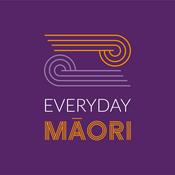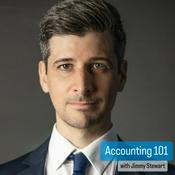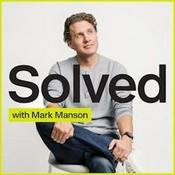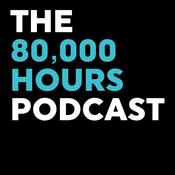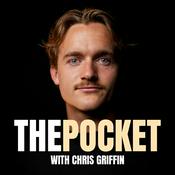Available Episodes
5 of 112
- Ep 103: Fire Safety in Multifamily Housing with Alex Horowitz (Incentives Series pt. 6)In which types of homes are people safest from fires? Alex Horowitz shares research showing that multifamily is safer than single-family housing, newer homes are much safer than older homes, and that a single stairwell’s just as good as two. This is part 6 of our series on misaligned incentives in housing policy.Show notes:Rodnyansky, S., Horowitz, A., Clifford, L., Su, D., Smith, S., & Trivedi, S. (2025). Small Single-Stairway Apartment Buildings Have Strong Safety Record. Pew Charitable Trusts.Clifford, L., Rodnyansky, S., & Horowitz, A. (2025). Modern Multifamily Buildings Provide the Most Fire Protection. Pew Charitable Trusts.Baird-Remba, R., & Horowitz, A. (2025). How States and Cities Decimated Americans’ Lowest-Cost Housing Option. Pew Charitable Trusts.Wegmann, J., Baqai, A. N., & Conrad, J. (2023). Here Come the Tall Skinny Houses. Cityscape, 25(2), 171-202.UCLA Housing Voice episode 97, Single-Stair Buildings and Eco-Districts with Michael Eliason.--------59:24
- Ep 102: Minimum Standards vs. Affordability with Benjamin Schneider (Incentives Series pt. 5)We’ve been grappling with trade-offs between stricter building codes and declining affordability for over 100 years. Benjamin Schneider helps us trace the history. This is part 5 of our series on misaligned incentives in housing policy.Show notes:Schneider, B. (2025). The Unfinished Metropolis: Igniting the City-Building Revolution. Island Press.Schneider, B. (2025 September 22). 106 Years Ago She Predicted Today’s Housing Crisis. What if we’d Listened? Planetizen. Wood, E. E. (1919). The Housing of the Unskilled Wage Earner: America's Next Problem. The MacMillan Company.Riis, J. A. (1890). How the Other Half Lives: Studies Among the Tenements of New York. Charles Scribner’s Sons.A brief history of tenements in the US.--------55:33
- Ep 101: Beyond Zoning with John Zeanah and Andre D. Jones (Incentives Series pt. 4)Your city just legalized “missing middle” housing in its zoning code… now what? With Memphis, Tennessee, as a case study, John Zeanah and Andre D. Jones discuss the hidden non-zoning barriers to developing small apartment buildings — and how to lower them. This is part 4 of our series on misaligned incentives in housing policy.Show notes:Zeanah, J. (2025). Beyond Zoning: Hidden Code Barriers to Middle-Scale Housing. Center for Building in North America.Garcia, D., Carlton, I., Patterson, L., Strawn, J., & Metcalf, B. (2024). Making missing middle pencil: The math behind small-scale housing development. UC Berkeley Terner Center for Housing Innovation. Zeanah, J. (2022 January 12). Memphis, TN Amends Local Building Code to Allow up to Six Units Under Residential Building Code (IRC) to Enable Missing Middle Housing. Opticos Design. 'Beyond Zoning' Abstract:In recent years, planners have made zoning reform a key priority to enable housing supply, including “missing middle” housing … This article explores the barriers beyond zoning that can hold back development of middle-scale housing. It begins with a background on why these lesser-known codes matter for housing diversity. This is followed by a case study of a project in Memphis, highlighting the non-zoning barriers posed to the development of an infill collection of cottages and small apartment buildings, and how they were overcome. Next, the article delves into specific categories of barriers, from building codes and fire safety mandates to infrastructure and local ordinances, explaining how each can impede middle-scale housing projects. Finally, it concludes with an Action Steps for Planners section, offering implementable strategies for reforming codes and coordinating across departments to unlock middle-scale housing development.--------1:10:15
- Ep 100: The Big 100!! Listener Questions, (Re-)Meet the Hosts, and Book ClubThe hosts gather to celebrate the 100th episode of UCLA Housing Voice. We also answer listener questions and announce the first book for our book club.Show notes:Appelbaum, Y. (2025). Stuck: How the Privileged and the Propertied Broke the Engine of American Opportunity. Penguin Random House.Appelbaum, Y. (2025 February 10). How Progressives Froze the American Dream. The Atlantic.Phillips, S. (2020). The Affordable City: Strategies for Putting Housing Within Reach (and Keeping it There). Island Press.Lens, M. C. (2024). Where the Hood At? Fifty Years of Change in Black Neighborhoods. Russell Sage Foundation.Lens, M. C., & Monkkonen, P. (2016). Do strict land use regulations make metropolitan areas more segregated by income? Journal of the American Planning Association, 82(1), 6-21.Manville, M., Monkkonen, P., & Lens, M. (2020). It’s time to end single-family zoning. Journal of the American Planning Association, 86(1), 106-112.Lee, A. E. (2023). The Policy and Politics of Highway Expansions. UC Davis. https://escholarship.org/uc/item/13x3n8zr. Chapelle, G. (2018). Does social housing crowd out private construction? (Working paper). Science Po.Elmendorf, C. S., Nall, C., & Oklobdzija, S. (2024). What state housing policies do voters want? Evidence from a platform-choice experiment. SSRN.https://www.hcd.ca.gov/housing-open-data-tools/statewide-housing-plan-dashboard https://easyreadernews.com/aes-ruling-against-redondo-may-open-door-to-builders-remedy-developments-statewide/ Episode 81: How New Zealand Passed Its Ambitious Zoning Reforms with Eleanor WestSee remaining show notes and each host's favorite episodes at https://www.lewis.ucla.edu/2025/10/21/100-the-big-100-listener-questions-re-meet-the-hosts-and-book-club--------1:28:19
- Ep 99: The ‘International’ Code Council with Jesse Zwick (Incentives Series pt. 3)North American buildings are built different — literally. Councilmember Jesse Zwick explains how the organization behind our unusual standards is built to fail, and he makes the case for a new approach. This is part 3 of our series on misaligned incentives in housing policy. Show notes:Zwick, J. (2025). Out of Code: The Hidden Costs of US Building Standards.Episode 78 of UCLA Housing Voice, on the relationship between building height and construction costs (in the US).Wikipedia article on the Grenfell Tower fire in London.Stephen Smith’s Slate article about elevator building codes.Episode 98 of UCLA Housing Voice, on elevator building code in the US and Canada.Strong Towns article featuring the quote by Lawrence Veiller.--------43:54
More Education podcasts
Trending Education podcasts
About UCLA Housing Voice
Why does the housing market seem so broken? And what can we do about it? UCLA Housing Voice tackles these questions in conversation with leading housing researchers, with each episode centered on a study and its implications for creating more affordable and accessible communities.
Podcast websiteListen to UCLA Housing Voice, The Rich Roll Podcast and many other podcasts from around the world with the radio.net app
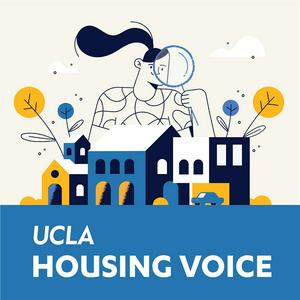
Get the free radio.net app
- Stations and podcasts to bookmark
- Stream via Wi-Fi or Bluetooth
- Supports Carplay & Android Auto
- Many other app features
Get the free radio.net app
- Stations and podcasts to bookmark
- Stream via Wi-Fi or Bluetooth
- Supports Carplay & Android Auto
- Many other app features


UCLA Housing Voice
Scan code,
download the app,
start listening.
download the app,
start listening.






